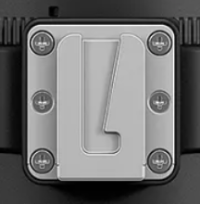Canon (and all other manufacturers) could definitely use some upper middle class priced small, light somewhat bright prime lenses. Nikon's PF lens approach is ingenious, featureing something handholdable, portable and usable for wildlife photographers, that is not cheap, but also not skyrocketing price wise. like the big telephoto primes.
It seems like Canon only focuses on great expensive lenses, or the really low end cheap and slow consumer lens "junk". Wheres the upper middle class? We used to have great inexpensive primes like EF 300mm f4l IS, 400mm f5.6L 200mm f2.8L etc.
They are still great, but not up to modern AF and IS standards, even on great cameras like the R5...
I would also love to see more high quality, mid-range lenses at prices that are affordable to hobbyists. Think of the many enthusiast-grade, non-L, EF USM lenses that Canon made in the 1990's and early 2000's (the film EOS heyday). Lenses like the 28-105 f/3.5-4.5 USM, 100-300 f/4.5-5.6 USM, 20-35 f/3.5-4.5 USM, and, more recently, the EF 75-300 f/4-5.6 IS USM. These were good optical and mechanical quality, full-frame lenses, that retailed for well below $1000 in 2023 dollars. (I owned all of those examples except the 20-35).
I don't follow financial trends in the camera industry as closely as others around here. But my impression is that there isn't much of a middle left in the market. At the high end, there will always be photographic professionals who need the build quality or IQ of the professional grade gear. Many enthusiasts go for the pro gear as well.
There's been a conventional wisdom over the past 8 years or so that phone cameras have eliminated the low end in the dedicated camera market, but there appears to still be enough of that market for Canon to have maintained the M series for as long as they did, and now to be aggressively going after it with cameras like the R50 and R100.
So where does that leave those of us who consider ourselves hobbyists or enthusiasts, i.e., the middle? I fear we're a relatively large and vocal group in online equipment forums, but not such a big factor when it comes to product strategy for a company like Canon. Modern cameras and lenses are very expensive to develop and manufacture, and all of the camera companies need to show a good return on investment.
I can't find it now, but I recall one of the photo sites featured an interview with the CEO of Sigma a few years ago, where he also said that the low end has been eroded, and they are going to devote more of their future efforts on the high end (fast Art-series primes). It's not just Canon being greedy.

